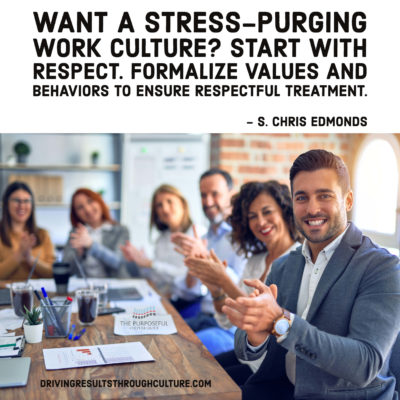Does your work culture amp up stress – or does it purge stress?
Stress is an emotion that’s created by limbo. If team members don’t know answers to questions like, “What should I do?” or “What if x, y, or z happens?“, they experience greater stress. Greater stress means they can’t act. They can’t move forward. And they worry about every single bad thing that could happen when they do take action.
Workplace cultures riddled with stressed-out people are environments built on uncertainty — not healthy uncertainty, which can fuel ownership, engagement, creative problem solving, and high performance.
Stressed-out people create unhealthy uncertainty — the kind of fear that arises when people aren’t sure that they will continue to be valuable to an organization if decisions they make don’t pan out.
Unhealthy uncertainty amplifies stress, erodes confidence, and creates anxiety. Stressed out people are not calm, cool, and creative. Stressed out people are much more likely to stop and observe rather than to proactively solve problems. They’re more likely to withhold information, to react angrily to changing requirements, and to take out frustrations on customers.
And that costs you money, customers, and engagement within your work environment.
In today’s three minute episode of my Culture Leadership Charge video series, I share three proven steps that will help leaders create and sustain a stress-purging work culture – and quash a stress-amplifying one.
This is episode eighty-two of my Culture Leadership Charge series. Each episode is a 3-4 minute video that describes proven culture leadership and servant leadership practices that boost engagement, service, and results across your work teams, departments, regions, companies – and even homes and neighborhoods.
You’ll find my Culture Leadership Charge episodes and more on my YouTube and my iTunes channels. If you like what you see or hear, please subscribe!
Have you responded to this month’s culture leadership poll? Add your perspective to two questions – it’ll take you less than a minute. Then click the “results” link to see what others from around the globe think!
Photo © Adobe Stock – Kraken Images. All rights reserved.




I know someone (truly not, “I have this friend”) who works in a pretty toxic work environment where poor leadership is par for the course and where internal stakeholders are often poorly treated by peers and other co-workers, which in turn often spills over into how external stakeholders are treated. That person wants to make a difference in creating this healthy “stress-purging environment” you describe but they feel very limited because they don’t have a formal leadership role. Even though this person is a gifted leader in their own right and has led effectively in other spheres of life, they feel constrained and unable to bring all of who they are to have a tangible impact in this environment. What can they do to help change this environment and influence the office culture positively?
Thank you for your question! It is admirable that this person wants to positively influence the quality of their company’s work culture. The bad news is that the only people who can modify the current work culture are senior leaders; they are the only ones with the authority and responsibility to change policies and rewards.
That’s not great news for this person. My recommendation is for her/him to do her/his best while looking for a job in a company that values it’s team members daily. There are good companies out there.
Thanks, Chris. Much appreciated. Sadly, I suspect this is true in far too many places.
Your suspicion is highly accurate, Mike! We’re working every day to help leaders create respectful workplaces, one company at a time. Be well and stay safe!
You too, Chris!